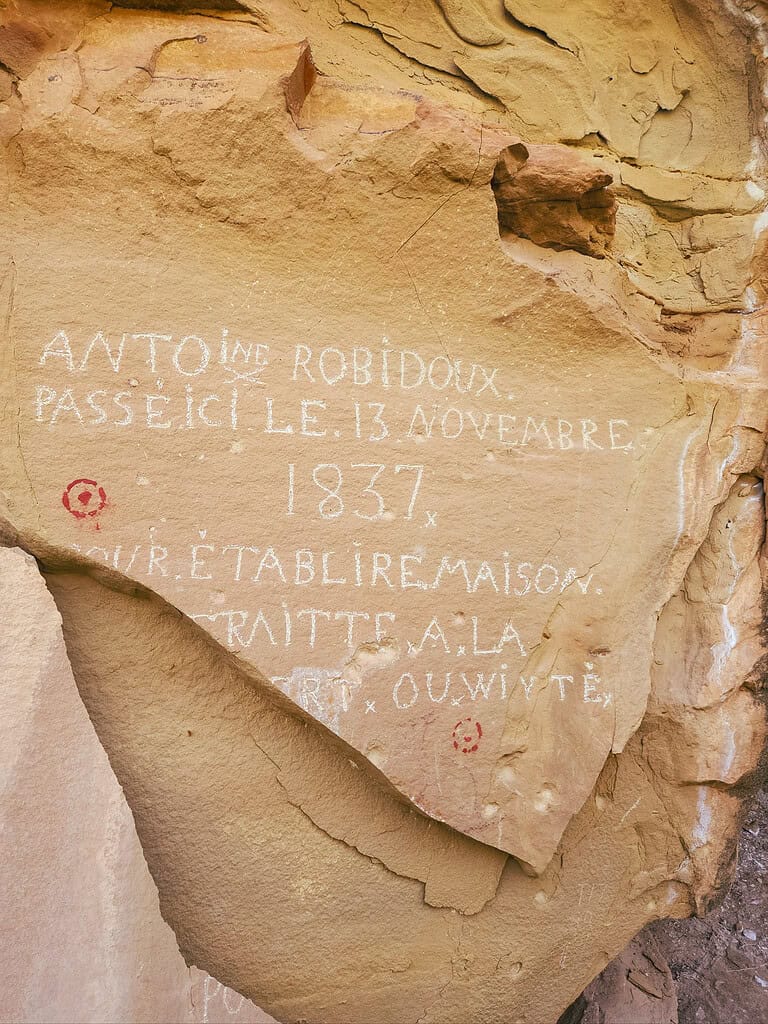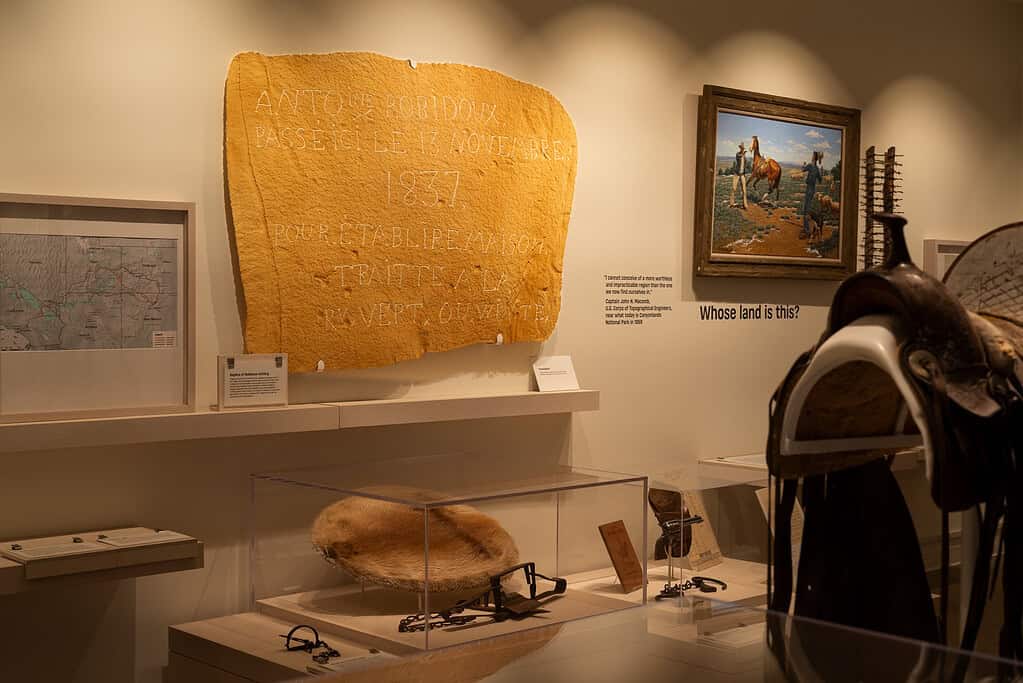Some information may be outdated.

Westwater Creek road follows the waterway through the hills, about five miles west of the Utah-Colorado border. Along the west side of the creek, an inscription stands about 9 feet tall and 4 and a half feet wide. It reads:
“Antoine Robidoux
passe ici le 13 Novembre
1837
pour etablire maison
traitte a la
Rv. vert ou wiyte”
Translated from French, the inscription means: “Antoine Robidoux passed here 13 November 1837 to establish a trading post at the Green River or White,” though there is debate among historians whether this reads “1831” or “1837.”
Who was Antoine Robidoux?
Born in 1794, Robidoux was one of five children born into a fur-trapping family. In the 1830s Robidoux became known for facilitating a trading route along the Spanish Trail between Santa Fe and the Uinta Basin and in the process, he built Fort Uncompahgre and Fort Uinta, referenced in the Westwater inscription. Trade moved his operations around the area and Robidoux’s fort near present-day White Rocks, Uintah County, Utah (Fort Uinta), was destroyed in 1844.
Stewardship at the Moab Museum
One of the Museum’s most prominent objects is a replica of the 1837 Antoine Robidoux inscription that is an iconic piece of Southwest American history—and soon the actual inscription may be in our care! While currently visible from a distance on private property in the Little Book Cliffs, the inscription is rapidly deteriorating due to natural forces.

Recently, the property owners noticed that a large slice of the inscription had fallen, and new cracks were present where moisture seeps between sandstone layers and causes natural spalling. Fortunately, they reached out to State Historic Preservation Office (SHPO) archaeologists, who began investigating options for preserving the panel and its historical value.
The Museum plans to steward the object until another institution with the space and resources is able to house and/or exhibit the inscription—which may take time, as it is exceptionally large and heavy, and would require a very specialized mount if considered for public display. During its time in Moab, the Museum plans to facilitate opportunities for interested individuals and researchers to view the inscription in person. In addition, it’s essential that anyone viewing the inscription understands the conservation and preservation imperative for removing this panel and other similar objects from the landscape.
The Moab Museum is dedicated to sharing stories of the natural and human history of the Moab area. To explore more of Moab’s stories and artifacts, find out about upcoming programs, and become a Member, visit www.moabmuseum.org.
Appreciate the coverage? Help keep local news alive.
Chip in to support the Moab Sun News.





